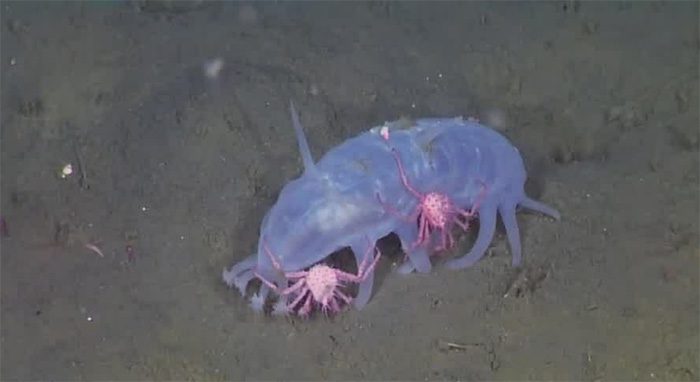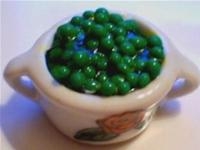The sea cucumber Scotoplanes, also known as “sea pigs,” lives on the ocean floor and has been observed carrying young king crabs on its belly and back.
Researchers capturing footage of the sea cucumber Scotoplanes in deep waters. (Photo: MBARI)
Scotoplanes, or sea pigs, are a peculiar genus of sea cucumbers that inhabit the deep sea. They use their unusual long, tube-like feet to walk across the soft mud, as reported by IFL Science on December 7. Their long, whip-like protrusions, known as papillae, extend out to search for nutrient-rich food. Their maximum body length typically reaches up to 17 cm. The tentacles surrounding the mouth of the sea pig are used to dig through debris of algae and small animals buried in the mud.
A team of marine biologists from the Monterey Bay Aquarium Research Institute (MBARI) encountered them alongside king crabs. They utilized a remotely operated vehicle (ROV) named Doc Ricketts to observe marine creatures living in a submerged container, and were surprised to find numerous small king crabs hitching a ride on the backs and bellies of the sea pigs.
To determine whether this behavior was common, the research team reviewed footage of 2,600 sea pigs and found that about one-fourth of them were carrying crabs. The hitchhikers were primarily juvenile king crabs of the species Neolithodes diomedeae, measuring approximately 1.4 cm across.

96% of juvenile king crabs hitching a ride on sea pigs.
Observations of juvenile king crabs at the depths where sea pigs reside indicate that 96% of them cling to sea pigs to “hitch a ride”, but they are difficult to detect due to their small size and the fact that they usually attach under the belly. This behavior could be an effective strategy to evade predators.
The research team at MBARI noted that juvenile king crabs require protection because there are no places for them to hide or burrow in the deep-sea plains (at depths of around 3,000 – 6,000 meters). They are also vulnerable to attacks post-molt, as their bodies are very soft.
Fortunately for juvenile king crabs, at depths of 1,000 – 6,000 meters, many sea pigs gather in large groups, sometimes up to 600 individuals. These “mobile shields” provide a valuable refuge. Additionally, the sea pigs may also benefit from this relationship, as the crabs help them remove parasites.




















































